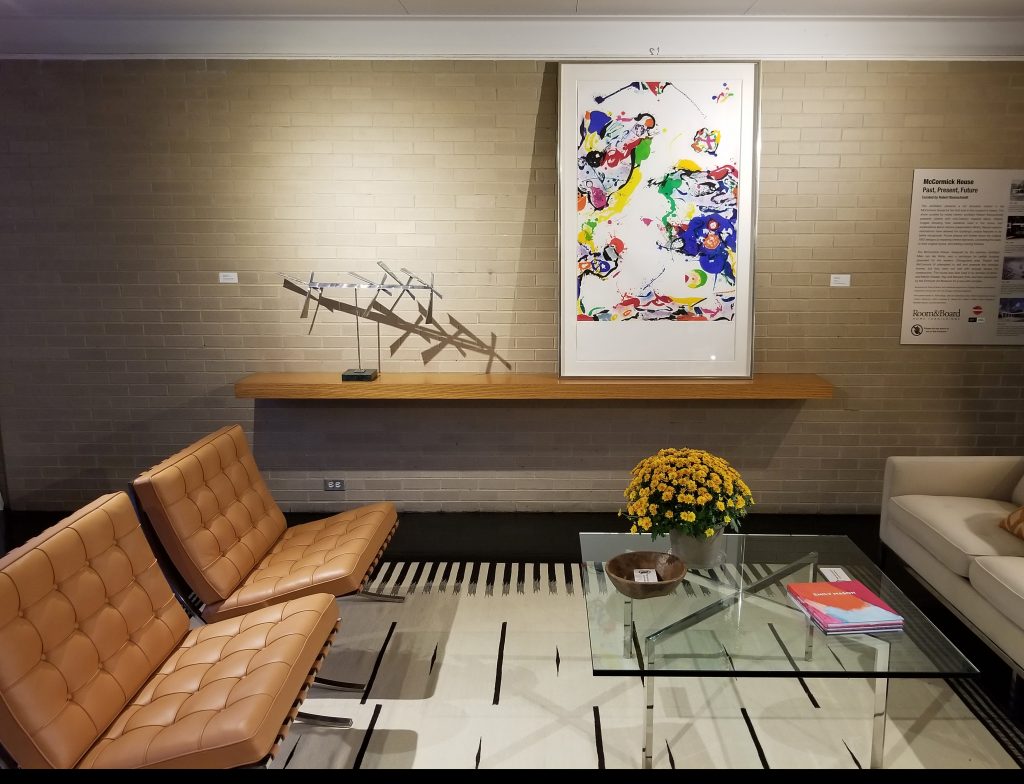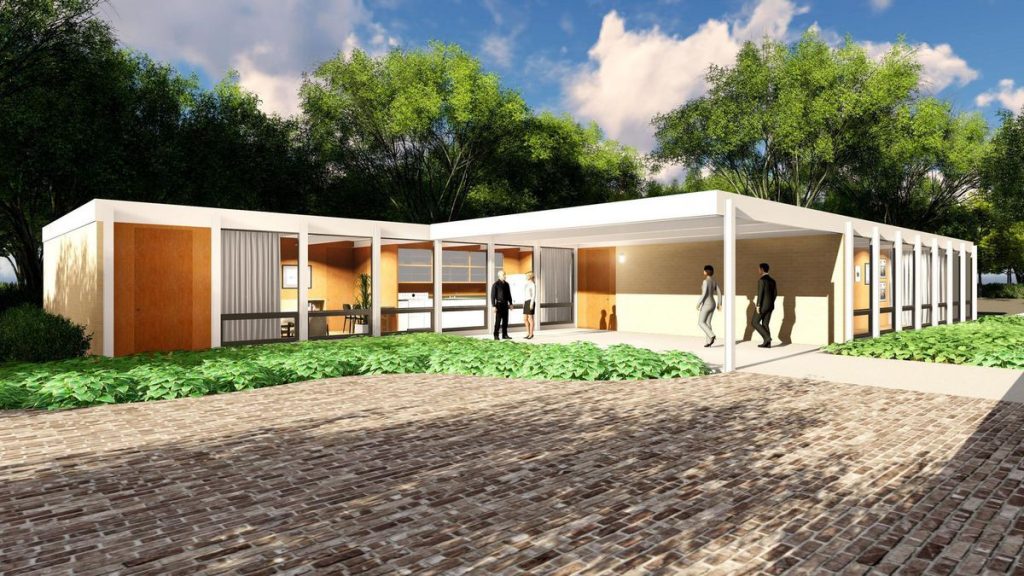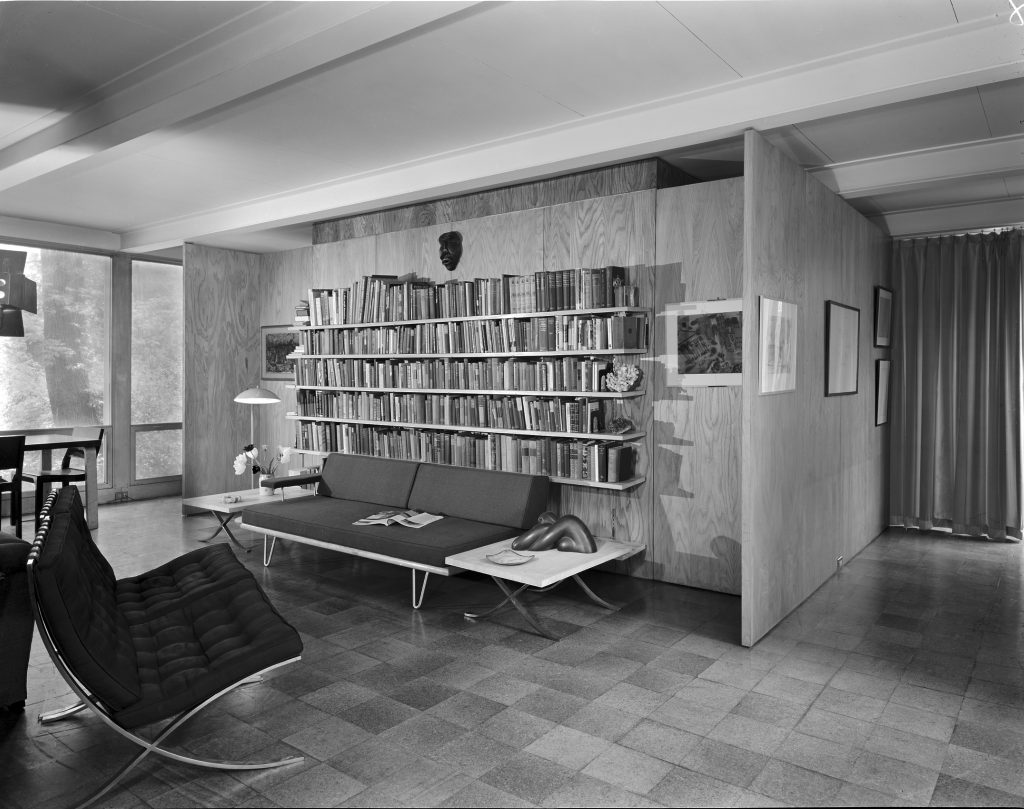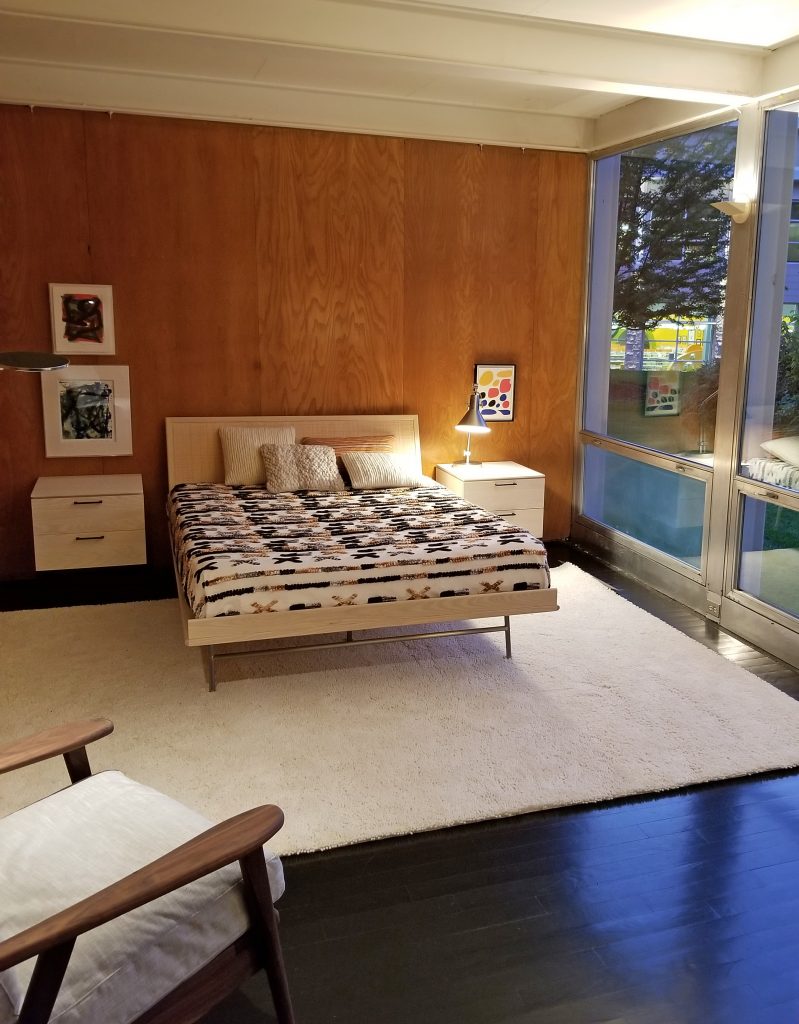
We often forget, especially when considering a single individual, that genius can have many dimensions. Although Chicago can boast of being home to some of famed Mies van der Rohe’s most important architectural contributions, there was another side to this modernist master. Known for the sleek majesty of masterpieces like 860/880 N. Lake Shore Drive or the quiet splendor of Farnsworth House, a single room retreat in Plano, Illinois that remains a marvel of simplicity and beauty, van der Rohe took on and excelled at other projects too.
From mid-September through January 12th of 2020, the Elmhurst Art Museum will be showcasing one of only three single family homes the famed architect ever designed. With its exhibition, McCormick House: Past, Present and Future, the museum looks at the house from the inside and uses the approach to spotlight its livability as well as the exceptionalism of its design. Offering tours and programming that explain the house’s significance and importance, the four-month event is an extremely rare opportunity to personally experience the vision of a brilliant architect at such an intimate level and understand how a home that exudes so much beauty might function as a household.
Built in 1952, one year after Farnsworth, McCormick House represented a very different goal for Mies. It was not intended as an isolated jewel or exclusive retreat. McCormick House was intended to work as a family home with the many practical considerations that entails. An early adopter of the modernist aesthetic that embraced sleek lines, natural materials and light; these are now precisely the elements that have become synonymous with van der Rohe’s name.

With its three bedrooms, carport and high end materials, McCormick House was also a deluxe prototype. Robert McCormick, scion of one of Chicago’s most illustrious families, was one of the developers of van der Rohe’s triumphs on Lake Shore Drive. According to Elmhurst Art Museum’s Executive Director, John McKinnon, it was during their collaborations on 860/880 that the idea to develop a prefab neighborhood in the western suburbs took root. McCormick House would be their prototype and would also become the home of its namesake, Robert McCormick and his wife, poet Isabella Gardner.
It’s not known why the project didn’t attract the interest needed to progress, but it was not realized. Mies however would go on a few years later to complete Lafayette Park in downtown Detroit that includes 186 residences, covers 78 acres and enjoys a cachet of enviable exclusivity.
Since the museum bought the house from its last owners, Ray and Mary Ann Fick in 1992, it’s been both moved and reconfigured. The current exhibit, focusing on the home’s interior space, is filled with surprises that center on the home’s charisma and its adaptability to a 2019 world. Prominent Chicago interior architect, Robert Kleinschmidt, who also sits on the board of the Mies van der Rohe Society at the Illinois Institute Technology can be credited for adding the ideal visual complements that draw your attention to the spatial and textural wonders of the house. Interior architecture requires a detailed understanding of the science behind a structure as well as the ability to enhance it aesthetically. Infrastructure and décor are brought together to complement one another.

As part of the activities commemorating the separation of McCormick House from the main museum last Fall, Kleinschmidt designed an installation in the children’s wing of the house to highlight the home’s suitability and comfort in a contemporary context. All the while retaining its mid-century soul. Executive Director McKinnon confided that because Kleinschmidt’s work received such unsparing praise, he was invited to expand his vision to the whole house. The results as seen at the exhibit’s reception on the 14th are splendid. The blending of 1950’s era modernism with elements reflective of 21st century tastes is extremely beautiful and retains constancy in every room. Staged for function as well as beauty, every item and its placement speaks as much to purpose as it does to cosmetic appeal and discreetly emphasizes how inviting a home like this would be to live in. Textures and colors balance, accentuate or subtly complement steel, wood and stone. And in every room, those wonderful walls of windows are celebrated by letting them simply be.
The continuity of elm clad walls gives the house pervasive warmth. Pockets accommodating privacy seem to be everywhere as are tantalizing and comfortable spaces intended for gathering and sharing.

An unintended consequence of the show may be in the manner it subtly proves how much the way we live today mirrors the modernist principles McCormick House’s honors and embodies.
An array of docent led tours and programs support the exhibit. Tours began September 15 and will continue Sunday afternoons between 1pm and 3pm. One is even being conducted by a former resident.
A doubtless fascinating curated tour by interior architect Robert Kleinschmidt is scheduled for Saturday September 21st at 1:30pm.
Additional information about intriguing lectures and panel discussions revolving around the impact residential modernist architecture has on metropolitan Chicago can be found on the museum’s website, https://www.elmhurstartmuseum.org/events/.
McCormick House: Past, Present and Future
Elmhurst Art Museum
150 Cottage Hill Avenue
Elmhurst, IL 60126
630-834-020